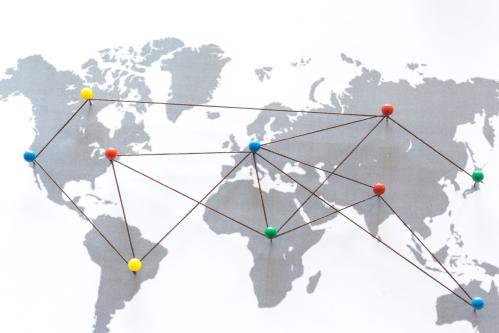It’s the time of year for New Year’s resolutions, and the events of 2015 suggest two big ones for our criminal justice system: (1) reduce gun violence, and (2) increase trust between police and the communities they serve.
Gun violence and communities’ distrust of law enforcement are complicated, long-standing problems, and they won’t be solved in one year, even if they are our top priorities. But a new working paper suggests that one simple policy change could help us address both, without costing cities a dime. How do we get this public safety “free lunch?” By reconsidering juvenile curfew laws.
First, a little background. Economists generally divide crime-fighting strategies into two categories: those that increase deterrence (by increasing the probability of getting caught, and/or the punishment received), and those that incapacitate would-be offenders (thereby reducing the opportunity to commit crime).
Juvenile curfews aim to reduce crime through incapacitation: if we tell young people to go home earlier at night, we hope they will have less opportunity to get into trouble. Juvenile curfews are extremely common in the United States—most large cities have them, as do many smaller cities and towns. They typically apply to those under age 18, and the punishment for breaking curfew is usually a fine.
Despite their ubiquity, juvenile curfews are extremely controversial, mostly because of concerns that police disproportionately target racial minorities when enforcing curfew laws. In many places, juvenile curfews strain already-tense relationships between local communities and law enforcement. But if they make streets safer, policymakers reason, maybe they’re worth it.
Jane Jacobs, a well-known urban theorist, wrote in 1961, “A well-used street is apt to be a safe street. A deserted street is apt to be unsafe.” This points to one problem with juvenile curfews: by incentivizing people (both juveniles and their caregivers—parents, older siblings) to go home earlier, they clear the streets of bystanders and witnesses whose mere presence could deter crime. It’s possible, then, that juvenile curfews actually make streets less safe, not more. The question is, which effect is larger in practice?
In a recent working paper, Jillian Carr and I tested the effect of juvenile curfews on gun violence in Washington, D.C. By law, the weekday curfew time in D.C. changes from midnight to 11:00 p.m. on September 1, and back to midnight on July 1, roughly following the school year. The July 1 change is very close to the July 4 holiday, but the September 1 change provides a clean natural experiment. If curfews reduce gun violence, then when the curfew shifts to 11:00 p.m. rather than midnight, gunfire between 11:00 p.m. and midnight should go down. Does it?
Just the opposite. Using data on gunfire incidents from ShotSpotter (acoustic gunshot sensors that cover the most violent neighborhoods in D.C.), we find that after the curfew switches from midnight to 11:00 p.m., the number of gunshot incidents increases by 150 percent during the 11:00 p.m. hour. This amounts to 7 additional gunfire incidents city-wide per week, during that hour alone. Jane Jacobs was right: the deterrent effect of having lots of people out on the streets is powerful. This makes juvenile curfew policies counter-productive.
A number of factors give us confidence that this increase in gunfire is driven by the curfew, and represents a meaningful effect on public safety. We control for changes during weekend and midnight hours, which are subject to the same seasonal trends (such as the start of the new school year) but should not be affected by the curfew change. Testing for effects hour-by-hour, we find that only the 11:00 p.m. hour is affected, so it doesn’t appear that shifting the curfew simply shifts gunfire to other times. And because we use ShotSpotter data on gunfire, instead of crime reports or 911 calls, we can rule out the possibility that the effect is driven by an increase in the reporting of gunfire. Indeed, it would have been impossible to conduct this study without these new data. Juvenile curfews change the number of witnesses out on the streets as well as how police are spending their time. It would be easy to dismiss any change in reported crime as driven by a change in whether criminal activity is noticed by the police. But the ShotSpotter sensors pick up gunfire regardless of whether anyone reports it.
The best previous study of juvenile curfews tested the effects of new curfew policies on local arrest rates. It found that when a curfew policy goes into effect, juvenile and non-juvenile arrest rates go down. This sounds good, but it is possible that arrests go down because police are forced to devote valuable time to enforcing the curfew, instead of investigating crimes. Arrest rates would also fall if the community stops cooperating with the police after the curfew policy is implemented—which might happen if they feel harassed, not helped, by local law enforcement.
Our study suggests that juvenile curfews increase gun violence, and therefore impose a cost on society by decreasing public safety. This doesn’t mean that curfews don’t have some positive effects. It’s possible that juvenile curfews reduce other types of crime (for example, minor offenses such as vandalism) that might be uncorrelated with gun violence. To the extent that those types of offenses are a concern, and if they are reduced more than gun violence is increased, local jurisdictions might find juvenile curfews worthwhile.
But to be clear, those are all “ifs”—there is currently no convincing evidence that curfews have such beneficial effects. Absent such evidence, cities should consider ending their juvenile curfews. There are simply too many potential costs associated with curfew policies—in terms of public safety, community trust, and limiting juveniles’ and parents’ choices. Without benefits to justify those costs, there’s no reason to keep juvenile curfews on the books.
Making progress on our big criminal justice goals will often require difficult tradeoffs. In this case the decision might be easy. We could make our streets safer simply by repealing juvenile curfew laws.
The Brookings Institution is committed to quality, independence, and impact.
We are supported by a diverse array of funders. In line with our values and policies, each Brookings publication represents the sole views of its author(s).



Commentary
Op-edRepealing juvenile curfew laws could make cities safer
December 29, 2015